
The Bullmastiff is a powerfully built animal showing great strength, endurance and alertness. The breed was developed in England by gamekeepers for protection against poachers. The foundation breeding was 60% Mastiff and 40% Bulldog. The Bullmastiff is a levelheaded, steady dog and makes a devoted, gentle companion. He gets along well with other family pets and loves children. He is brave and protective. He saves his deep bark for really important matters. He is large and strong, so early obedience training is a must. As a puppy, his chewing needs are big too.
Life Expectancy:
15 years
Energy Level:
Average energy, but extremely powerful.
Living Conditions:
Indoors with large spaces. Sensitive to heat.
Barking:
Average
Exercise Needs:
Daily 30 minute walk. Yard play.
Breed Group:
Working
Size:
Very Large
Height:
24-27 inches
Weight:
100-130 pounds
Standard Hair Colors:
Red, fawn, or brindle, with a darker muzzle and ears. White on the chest is
permissible.
National breed club:
The American Bull Mastiff Association
He is also known as the "gamekeeper's dog" because he was breed to accompany gamekeepers for the ability to track and overpower a poacher. The Bullmastiff is now primarily a family companion with a calm, dependable disposition when properly trained and socialized. He is a natural guardian of the home and will not back down from a fight. To strangers he is rather standoffish, but he is loving toward his owner and is normally very gentle, cheerful and calm.
The Bullmastiff is intelligent, loyal, obedient, and courageous. This dog is both fearless and yet docile. They can be somewhat dominant toward other Bullmastiffs, but is very tolerant towards children and can get along with other household pets provided proper socialization has taken place. Unwanted visitors will be driven away.
Exercise is important for a Bulldog to build stamina and prevent obesity, but don't overdo it, particularly when it is hot or humid. Because of his face and body type, light and uncomplicated exercise is enough to keep him healthy. It will adapt itself to the activity level of your family. Sufficient rest is key to development of healthy bones, muscles, and joints.
Bullmastiffs are best as family companions who live indoors with their loved ones. Despite their large size and tough-guy good looks, a bullmastiff can have a very soft temperament where loved ones are concerned. They are happiest when they are spending time with their family, and are best suited as indoor pets. Be aware that bullmastiffs are very intolerant of extreme heat. Because of their shortened muzzles, you must take care to be sure they do no overheat on warm days, and restrict activities to the coolest hours of the day.
The Bullmastiff’s coat is short and dense, giving good weather protection.. Periodically remove dead hairs with a rubber brush.
Dogs are subject to health problems, and Bullmastiffs are no exception. Common health issues are cancer, hip and elbow dysphasia, torn anterior cruciate ligaments, bloat, subaortic stenosis, skin and coat problems, thyroid problems and entropian.
...you may also want to consider the Rottweiler. It is basically a calm,
confident and courageous dog with a self-assured aloofness that does not lend
itself to immediate and indiscriminate friendships. Like the Bullmastiff, he
can be fearless yet docile, and has an inherent desire to protect home and
family. The Rottweiler is an intelligent dog of extreme hardness and adaptability
with a strong willingness to work, making him especially suited as a companion,
guardian and general all-purpose dog.
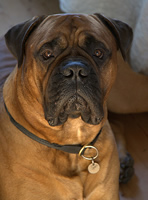
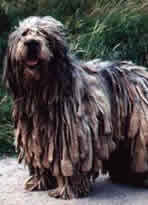 Bergamascos: A guide to dogs and puppies of the Bergamasco breed
The Bergamasco!
The Bergamasco is a solid, square-bodied, m
Bergamascos: A guide to dogs and puppies of the Bergamasco breed
The Bergamasco!
The Bergamasco is a solid, square-bodied, m
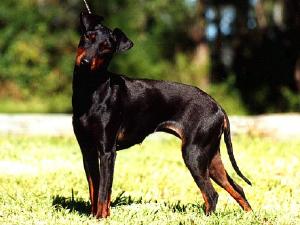 Manchester Terrier
Manchester Ter
Manchester Terrier
Manchester Ter
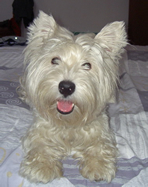 West Highland White Terriers: A guide to dogs and puppies of the West Highland White Terrier breed
The West Highland White Terrier!
The West Highland White Te
West Highland White Terriers: A guide to dogs and puppies of the West Highland White Terrier breed
The West Highland White Terrier!
The West Highland White Te
 Coton de Tulear Breed Profile
Choosing a Coton de Tulear - Coton de Tulear
Coton de Tulear Breed Profile
Choosing a Coton de Tulear - Coton de Tulear
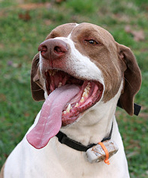 Pointers: A guide to dogs and puppies of the Pointer breed
The Pointer!
The Pointer, also known as the English Pointer
Pointers: A guide to dogs and puppies of the Pointer breed
The Pointer!
The Pointer, also known as the English Pointer
Copyright © 2005-2016 Pet Information All Rights Reserved
Contact us: www162date@outlook.com